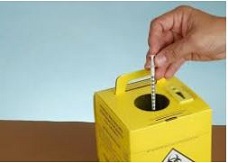
You’ve seen the story in the news before - a child has been pricked by a used needle.
If the child received the injury from a sharps
container in a local government’s public toilet, the local government could be liable for a potential physical or emotional injury claim.
In 2018, sharps container regulation tightened in South Australia after a young girl received a needle stick injury.
The eight-year-old ran her hand over an overflowing sharps container on the wall of a public toilet.
Which prompted the government to:
- Enact a mandated minimum height of the unit on the wall
- Fix labelling around the unit – with instructions on how to report a full or dangerous bin
- And adjust the type of unit itself
In NSW, the State government has moved away from wall mounted sharps containers.
The government recommends recessed containers. Syringes are disposed via a stainless steel disposal pipe that discharges into a sharps container within a service area.
After a similar incident occurred in WA recently, LGIS recommends local governments audit sharps containers in public toilets.
These containers should be:
- Correctly labelled
- Emptied often
- Installed at a height out of reach of children
- Checked regularly for corrosion or splits
If the bin often gets full between servicing it may be time to increase contractor visits. If bins are empty between visits then it’s time to decrease the service.
Asking your service provide to produce regular reports on bin fullness can be an effective way to monitor this.
Of course, there should be a balance between the needs of sharps containers users and community safety.
People who use a wheelchair would need containers to be at a lower height to those who don’t.
Local governments should also make a detailed history following the report of a needle stick injury.
Take down:
- Details of the incident – time, date, place
- Details of the injury – location on body, superficial or deep
- The source (the person who used the needle) if they are known or unknown?
- What kind of needle/syringe?
- If any first-aid has been provided?
- Is there visible blood on/in the needle/syringe?
- Immunisation history (specifically tetanus and hepatitis B)
Research shows that the chance of contracting hepatitis or HIV from a needle stick injury is relatively small.
However, this does not minimise the emotional stress this type of injury could cause or the loss of trust in the local government.
For queries regarding sharps containers and needle
stick injuries please contact the LGIS risk and governance team or your regional
risk coordinator.